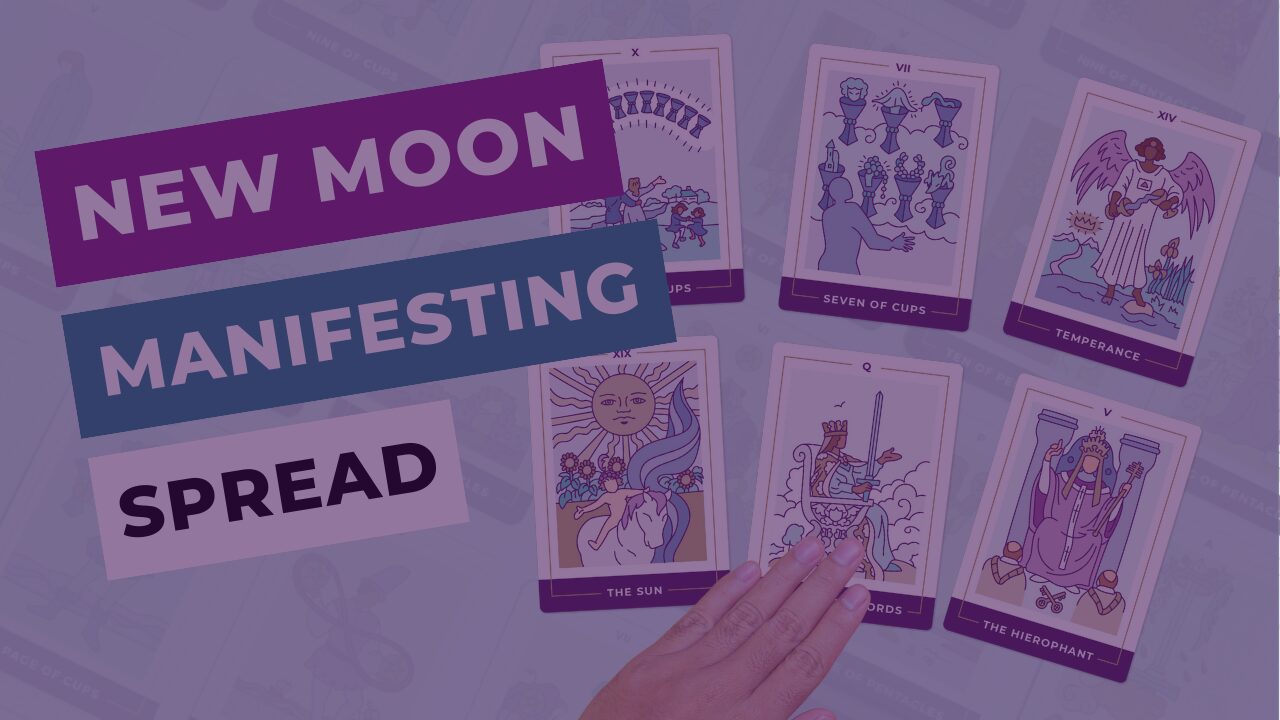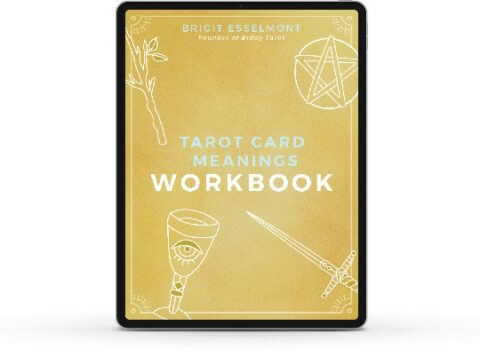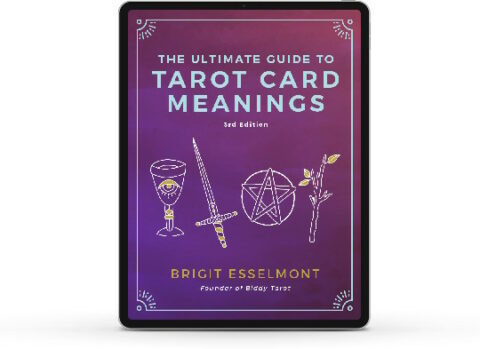Victoria Collins is the author of Fire and Sacrifice, a new novel based on a true story of the priestesses of Vesta in ancient Rome. Backed by 10 years of research into the ‘Vestal Virgins', Fire and Sacrifice is a historical suspense novel of survival, love and celebration of the sacred feminine.
As personifications of female archetypes, the Tarot Queens can be much like the goddesses. Relating a Tarot Queen to a goddess with the same traits can be a very effective way to deepen your understanding of these cards.
Get to know these multi-faceted goddesses, and you can uncover insights and connections with the Tarot Queens in easy and exciting ways.
As earthly beings of the minor arcana, I look upon a Tarot Queen as a priestess of the chosen goddess; one who walks with the goddess in her everyday mortal work (just like you can!).
The Goddess Vesta and the Queen of Wands
The Roman goddess of fire, Vesta, is an easy starter for insights into the Queen of Wands, who sits in the suit of the fire element with her passion and energy gently smouldering.
Vesta was goddess of the hearth fire specifically. As the traditional centre of the camp or home, Vesta's energy is ever present in our lives.
Every person is drawn instantly and instinctively to a fire in the centre of a camp or home.
The priestess of Vesta/Queen of Wands is magnetic and charismatic. As a woman of fire, she is ambitious and driven, but it's somehow attractive and inspiring rather than material. People want to warm themselves by her wisdom, charm and sensuality. They want to be with her, listen to her, bask in her energy.
The hearth fire brings to the home the presence of an ancient, primal life force. The priestess/Queen of the hearth fire knows that she walks with an untouchable, perpetual passion and energy in her everyday work.
As the goddess of the hearth, the fire's most wild and fierce traits are contained but remain in Vesta's soul and serve to add depth to her intrigue and potential.
Archaeology indicates that Vesta's temple in the Roman Forum, the ruins of which are present today, was originally built as a hut protecting a camp fire around 600-800BC. In those ancient times a fire was a prized energy source which fuelled all prospects of health and growth, and from this camp area grew Rome the city, then empire.
Vesta's fire was life and potential. She sustained the vision for Rome's greatness.
Vesta's priestess/Queen has a fire in her belly, and the drive to keep it aflame.
There is a sense of positivity about this priestess/Queen. She is full of feminine passion quietly glowing in her depths.
The hearth fire may be constant and grounded but it is also ever moving, changeable, untouchable. Vesta reminds you to stay connected with those mysterious feminine traits even while you do the work-a-day stuff required of modern life and achieving your goals.
The Goddess Vesta and the Queen of Pentacles
Vesta's very pragmatic, earthy side is also manifest in the Queen of Pentacles.
As the centre of the home, providing warmth, light and sustenance through cooking, Vesta can be seen as the ultimate domestic goddess or Earth Mother just like the Queen of Pentacles.
Pentacles is of the earth element, and according to the historical writer Ovid, Vesta was considered by the Romans to also be one and the same as the earth itself.
Vesta's temple housed a sacred fire which was considered to represent the hearth of the empire and therefore its prosperity and security. She was protectress of the whole Roman empire as it expanded and conquered foreign lands: so, her energy extends to whatever ‘success' and ‘stability' mean to you.
The priestess of Vesta/Queen of Pentacles recognises the divine in nurturing your centre of prosperity whether that is your career, your own business, your family and home, or a project that represents your soul path; all things represented in the suit of Pentacles.
This woman has the wisdom to understand that she needs a strong, reliable foundation if she is to sustain love or greatness.
She is your go-to when there's need for a nurturing mother/manager figure to hold things together while the family or team gets on with the work of building a life of stability and prosperity.
If you're in the lead, she can draw on the dependability of the hearth fire to help you find ways to nurture yourself, too.
Note the abundance pictured around this Queen in the Rider-Waite deck: surrounded by vines covering in blooms and fruit, grasses and a rabbit (a clear symbol of abundance, new life and reproduction) under a clear sky yellowed by the nurturing sun.
This priestess of Vesta/Queen of Pentacles is first and foremost of a woman of fire. Earthy and pragmatic she may be, but this is no dowdy matron. In her every movement, be it cooking and cleaning or writing business strategies, she carries the divine, driven, changeable, creator energy of the primal fire.
6,452 Tarot Enthusiasts Have Already Joined!
Are You Ready To Unlock Your Best Tarot Readings Yet?
Stop the guesswork in your Tarot practice. Discover clarity and confidence in every card you pull.
April 28th - May 2nd
Dive into five days of fun, intuitive learning with Brigit Esselmont—LIVE!
Note also that ritual sacrifices were placed into Vesta's fire for purification. The fire sears away decay and contamination. Vesta's flames have no regard for the unnecessary, shallow busy-ness that often complicates our modern daily lives. Her priestess/Queen is interested only in substance and the divine work of your true home and path.
The Goddess Minerva and the Queen of Swords
A Roman goddess of wisdom and war seems like a great place to find insights into the tarot's Queen of Swords, who is a woman with a weapon sitting in the suit of the mind and intellect!
Minerva was said to be born directly from her father's (Jupiter's) brain, emerging fully formed and with weapons and armour. She's often depicted with a sword, or spear and shield.
Minerva was originally and more broadly honoured as a goddess of wisdom. Poetry, medicine, numbers, commerce, and crafts were also thought to be within Minerva's realm. She is equated with the Greek Athena but believed to be derived from the Etruscan culture which predated the Romans in that part of Italy.
Her mythology shows her descending into rage when challenged or embarrassed by others, and as fiercely protective of her virginity. This isn't a woman particularly in touch with her emotions.
She is however a thinker, leader and inventor.
Minerva was born ready. The priestess of Minerva/Queen of Swords is illustrated in the Rider-Waite deck with her sword raised and her hand beckoning to unseen subjects. She has a ‘bring it on' energy to her. She is equipped to handle whatever comes, answer any question or debate any query. She is an authority on life and your go-to Queen when you need decisiveness and clarity of mind.
This priestess/Queen has the wisdom (and the weapon) to cut through illusion and deception. She is not clouded by emotion or fear.
As Minerva of commerce, she will ‘çrunch the numbers' before any decision. She is the objective leader who can think creatively but who will always be rational, realistic, logical and consider the bigger picture. She will wield that weapon if required for the better end, too, without any guilt. For a modern example, I like to think of Judy Dench's M in recent James Bond movies.
Unfeeling? Perhaps at times, but she'll tell you that's necessary.
It might seem incongruous then, that the Queen of Swords' throne is often decorated with butterfly motifs. Butterflies are a symbol of transformation in life. Consider that she is priestess to the goddess of wisdom; and that we are most ready for change and new beginnings when we are experiencing clarity and confidence – and have the wisdom to cut through illusion and know our true path.
Minerva is a goddess of action.
The suit of Swords is of the air element, and therefore the East. Their wise Queen is of new dawns, and of new solutions ‘dawning' on her.
The Goddess Venus and the Queen of Cups
Venus, the Roman goddess of love and beauty is a great place to start when delving deeper into the character of the Queen of Cups. In the Rider-Waite deck this Queen is even pictured on a throne in the shape of a clam shell, reminiscent of Botticelli's famous Birth of Venus painting.
When we think of Venus (or her Greek counterpart Aphrodite), we think of a goddess who embodies feminine sensuality and sexuality. She is completely authentic and unapologetic about her feelings and desires.
Venus is the archetypal feminine energy: in touch with her emotions, changeable and fluid, beautiful, expressive, intuitive. She is receptive but not passive: she is a vital, present, dynamic force. She is a mother and creator.
As mother of the god Cupid, Venus is the mother of romantic love so remember that it is only a part of her story.
In tarot, Cups are the suit of the water element. Venus, too, is of the water; said to be born of sea foam, and risen from the ocean. In tarot, water is metaphor for emotion and the unconscious, so we can view Venus's birth as rising from unconscious emotion (which leaves us feeling out of control and confused) to emotional awareness.
The tarot's Queen of Cups sits on a small patch of earth surrounded by water. She is grounded, allowing water/emotion to swell about her without being tossed about by it. The Queen of Cups is emotionally aware but also in control of herself. She can feel deeply, then healthily let the emotion pass.
The priestess of Venus/Queen of Cups honours her feelings and accounts for them in decision making, but does not let them rule her. In that state, she also has no fear of emotion; no fear of tears, nor of authentic, open joy and desire.
Note that water is receptive by nature: drop a stone into water and the water takes it into itself.
As a priestess of Venus, the Queen of Cups understands love as an opening up; of allowing yourself to take in, and be taken in by, another. In relationship she plays the receptive role to the male active; the one through which the thinking-focused male can reach the world of intuition and emotion.
It is this unique gift, more than physical beauty, that makes her energy irresistible.
Venus, through the Queen of Cups, can be a great energy to draw on when you need to allow yourself to feel or show emotion more; when you need to embrace femininity and all its power; or when relationships would be enriched from your allowing yourself to receive: to stop doing in your busy modern life, and allow being.




 Harness the wisdom of the Major Arcana with 22 guided meditations. Here’s what you’ll get:
Harness the wisdom of the Major Arcana with 22 guided meditations. Here’s what you’ll get: Create a deeply intuitive and personal connection to the Tarot cards with your very own Tarot Card Meanings Workbook. Here’s what you’ll find inside the workbook:
Create a deeply intuitive and personal connection to the Tarot cards with your very own Tarot Card Meanings Workbook. Here’s what you’ll find inside the workbook: Here’s what you’ll find inside for every card in the deck:
Here’s what you’ll find inside for every card in the deck: Start doing deep, accurate readings TODAY with this step-by-step accelerated program for beginners.
Start doing deep, accurate readings TODAY with this step-by-step accelerated program for beginners.